Get PeakVisor App
Sign In
Search by GPS coordinates
- Latitude
- ° ' ''
- Longitude
- ° ' ''
- Units of Length

Yes
Cancel
Share ×

Scan the QR code and open PeakVisor on your phone
❤ Wishlist ×
Choose
Delete
Pilanesberg National Park is a popular wildlife reserve in the North West province of South Africa, approximately 2 hours northwest of Johannesburg. A massive, ancient volcanic crater defines the park; it is an island refuge of pristine nature surrounded by human development. There are 12 named mountains in Pilanesberg National Park, with the highest and the most prominent being Pilanesberg, at 1,689 meters (5,541 ft). While the park’s mountainous topography is scenic, the primary attraction is the abundance of charismatic game animals, with over 10,000 large mammals living in the park as of 2010.
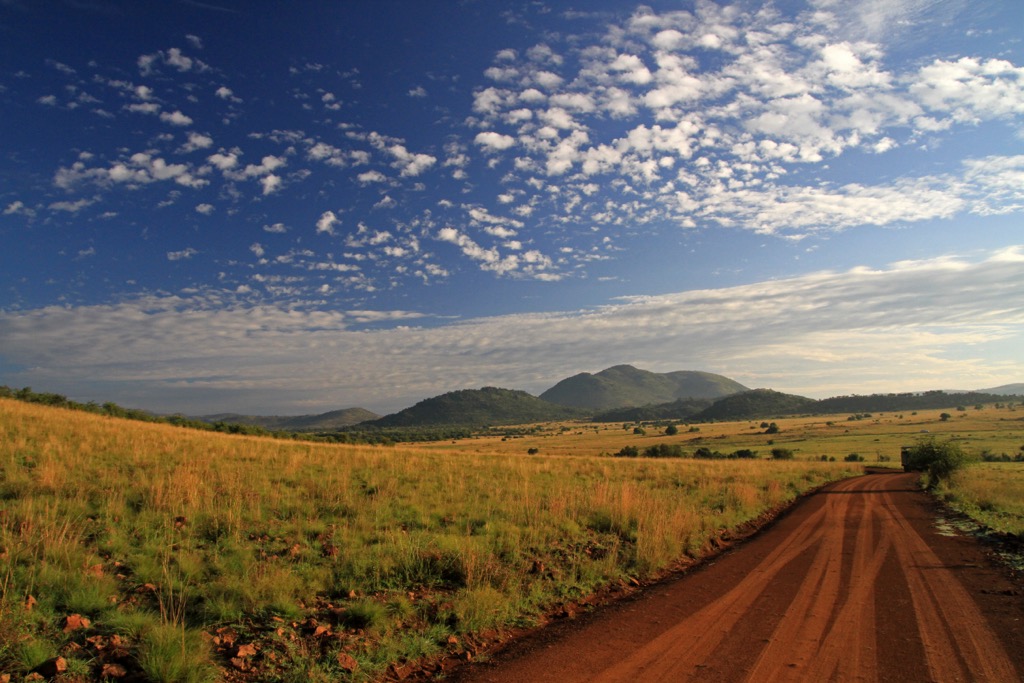
The Pilanesberg National Park sits to the north of Rustenburg and is under the administration of the North West Parks and Tourism Board. The park spans an extensive area of 57,200 hectares (141,344 acres) within the root zone of an extinct volcano.
Its topography is characterized by alternating ridges and valleys, forming concentric rings that rise abruptly. These hills rise 300 to 600 meters (980 to 1,970 feet) above the surrounding plains. A prominent geological feature is the Pilanesberg Alkaline Ring Complex, among the largest volcanic complexes of its kind globally.
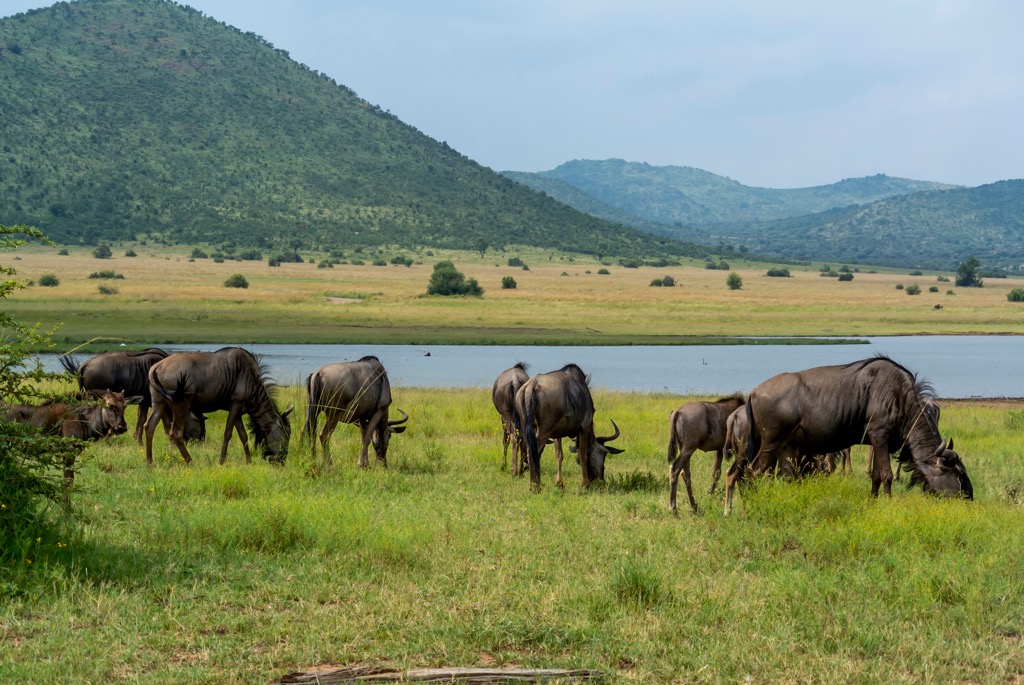
Pilanesberg National Park is classified as a warm steppe climate, marked by mild winters and warm summers, with an average annual precipitation of 500 mm (20 inches). The park experiences two distinct seasons: a winter dry season from May to September and a summer monsoon from October to April.
During the dry season, rainfall is limited, resulting in sparse foliage and heightened visibility of the park’s wildlife near permanent water sources. Morning temperatures range from 7°C (45°F) to afternoon highs of 23°C (73°F).
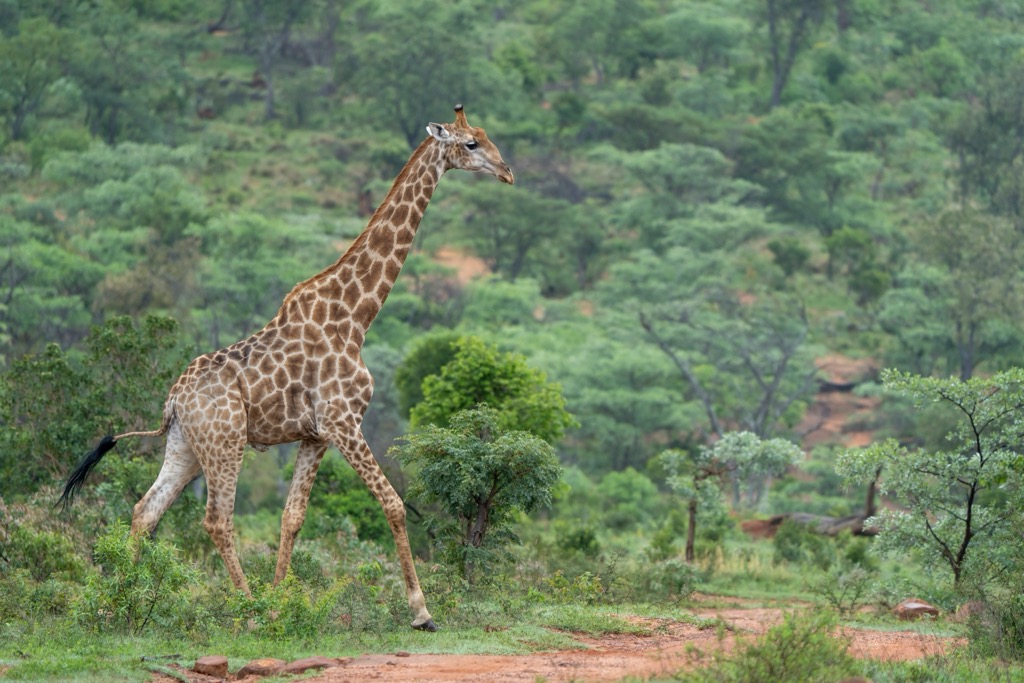
Conversely, the wet season sees daytime temperatures average around 29°C (84°F); morning lows hover around 15°C (59°F), while afternoon highs often exceed 30°C (86°F). Frequently, afternoon storms offer respite from the heat, although humidity levels are comparatively low compared to coastal regions.
Pilanesberg National Park boasts diverse flora and fauna, including iconic game animals such as elephants, lions, rhinos, buffalos, and leopards. The park features several camps to accommodate visitors, including Bakgatla and Manyane.
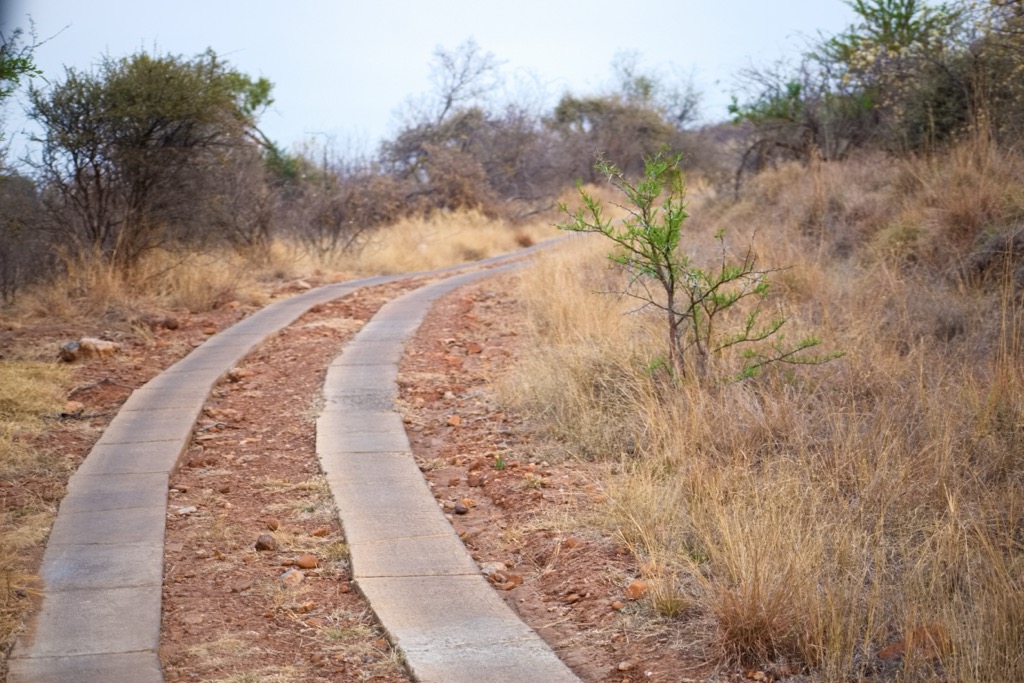
Pilanesberg National Park is a unique geological feature distinguished by its volcanic crater, which forms an alkaline ring complex. This rare geological formation is believed to have originated 1.3 billion years ago during the late Proterozoic era. The ring structure is evident in satellite imagery as a perfect circle of hills with a fracture line that cuts it cleanly in two.
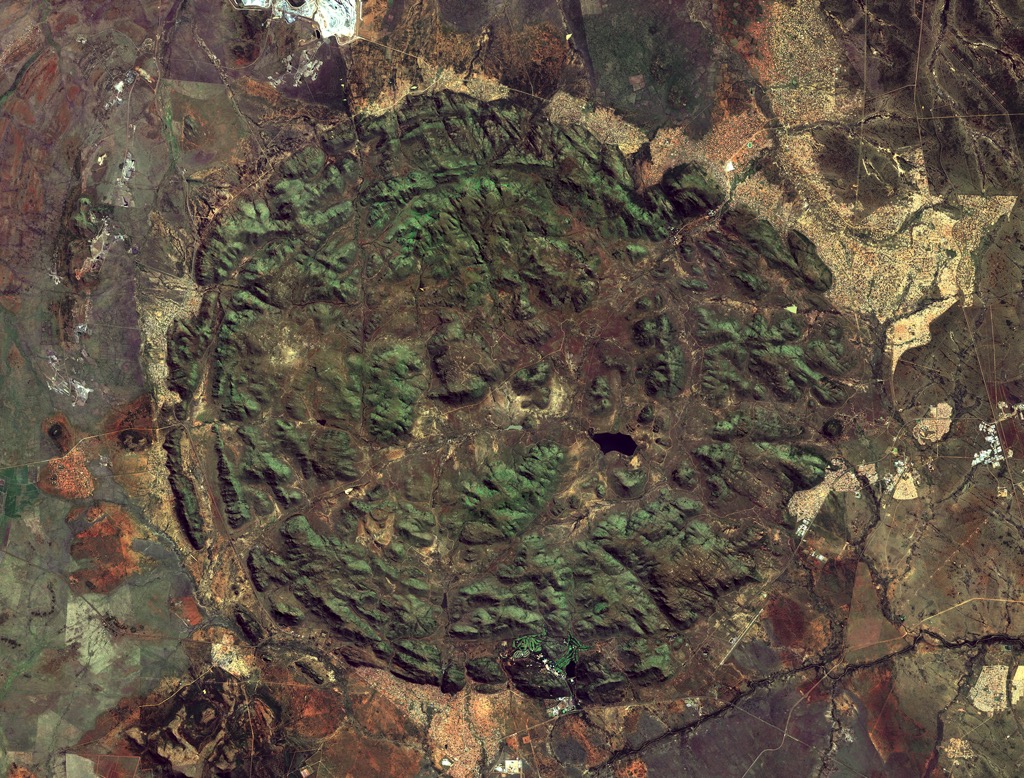
The Pilanesberg’s calm undulations were once the scene of geological turmoil. Before it all happened, an enormous volcano-like edifice towered over the landscape, standing higher than Kilimanjaro. There were cycles of volcanic eruptions deep down where magma cooled before it reached the surface. Eventually, the center of the mountain collapsed, forming a crater, now the Mankwe Dam. Millions of years of erosion have reduced the mountain to rolling plains and exposed the hard rock we now know as the Pilanesberg.
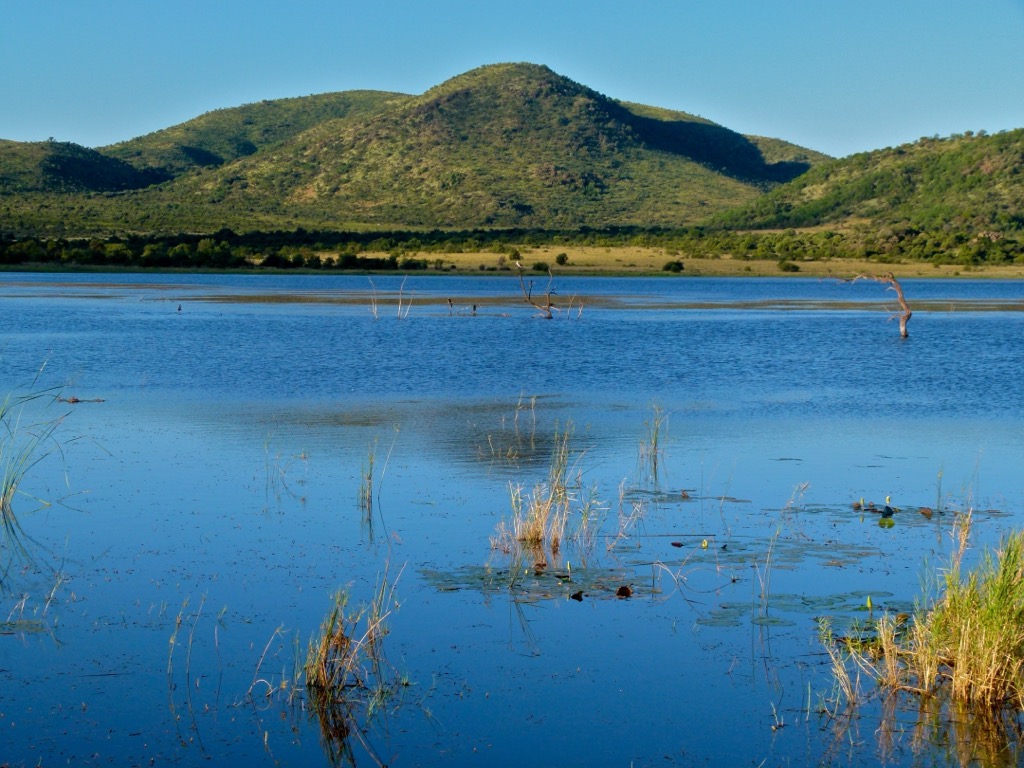
The Pilanesberg National Park boasts a rich diversity of flora and fauna stemming from the amalgamation of two distinct landscapes: the Kalahari and the Lowveld. The Kalahari, characterized by vast sandy savannahs, contrasts with the Lowveld, denoting expansive open savannahs within South Africa. The predominant grasslands host a multitude of grass species, including the camphor bush. Wooded areas feature acacia trees, yellowwood, and various shrubs.
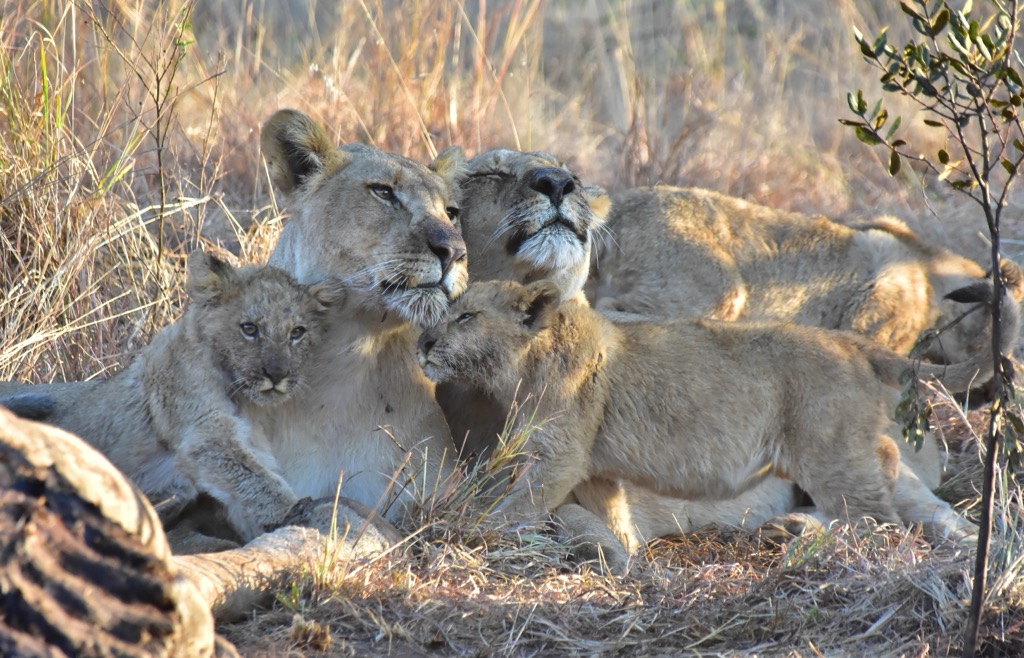
This protected area is inhabited by the renowned “Big Five,” named for being the five most dangerous game animals: the lion, leopard, elephant, buffalo, and rhinoceros. In addition, the park is a habitat for hundreds of other noteworthy species, such as cheetahs, wild dogs, Roan, Tsessebe, sable antelopes, and over 360 bird species. The dry river beds transform into water pools during the rainy season, attracting the diverse wildlife and making for excellent viewing. Conversely, wildlife congregates at permanent water sources during the dry winters.
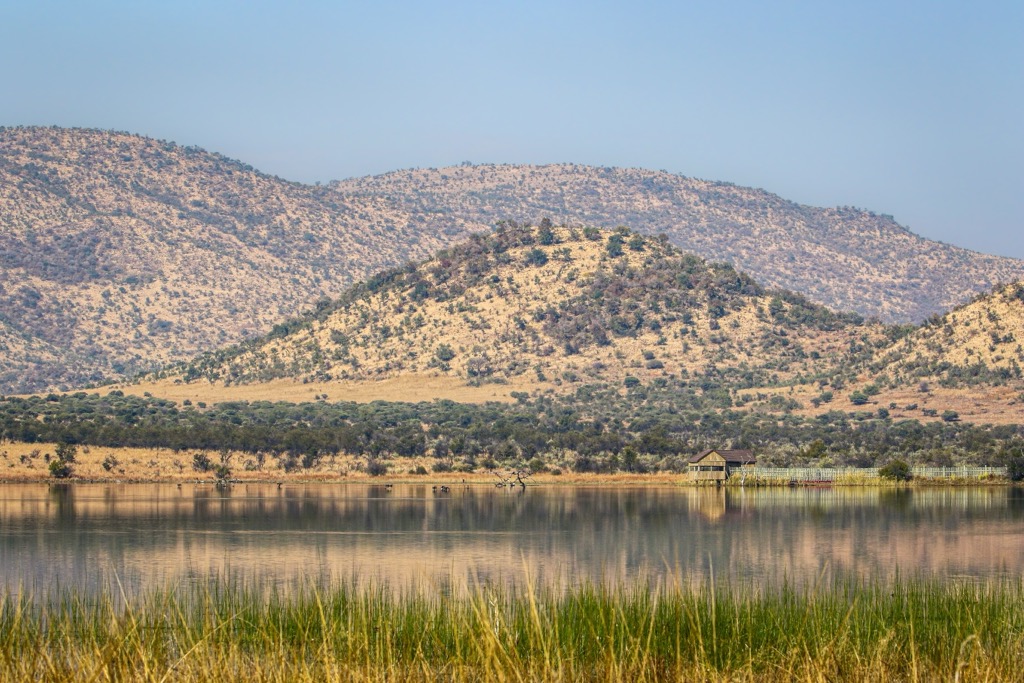
Humans have been in the Pilanesberg area since the Middle Stone Age. Many artifacts remain from the Iron and Stone Ages, including tools and the foundations of early settlements.
Hunter-gatherers roamed the area well before the first Setswana-speaking people settled as cattle and grain farmers. The park is named after Chief Pilane of the Kgafêla people, who ruled from Bogopane, Mmamodimokwana, and eventually Mmasebudule during the 1800s.
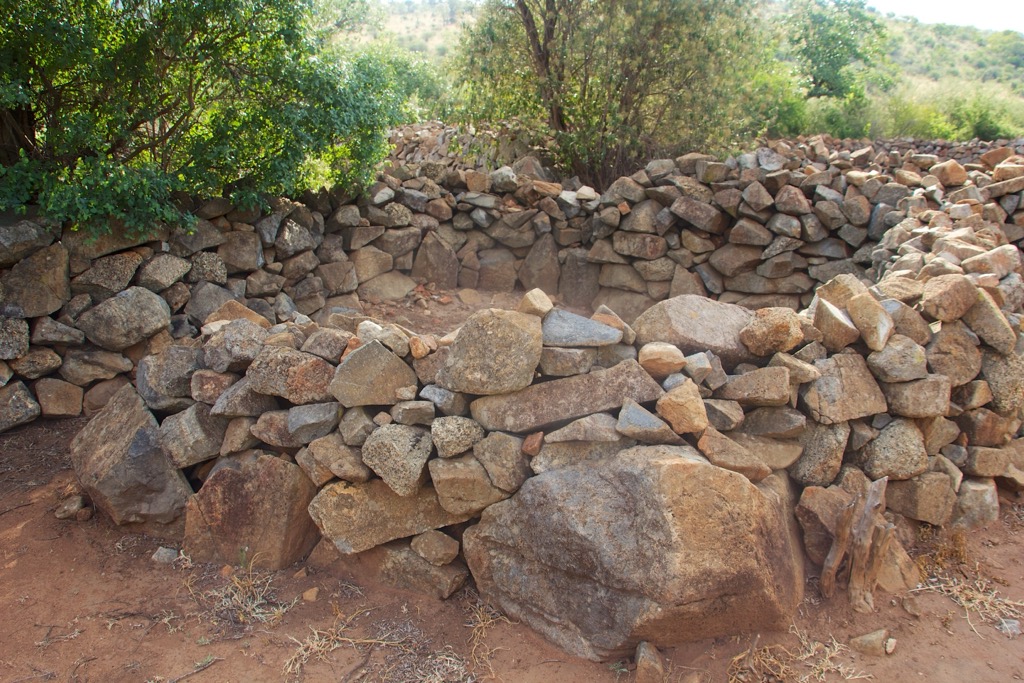
The park became designated as a wildlife reserve beginning in the 1970s after negotiations resulted in the tract of land coming into government hands. The following decades saw the relocation of thousands of large mammals into the park, stimulating the recovery of ecological diversity. Tourism has boomed in post-apartheid South Africa and many wildlife populations continue to increase.
Pilanesberg is home to several trails, although most are guided due to the predatory nature of the animals within the park. Game drives are the most popular way to experience the park’s wildlife, but guided hikes are a far more intimate way to learn about this ancient and complex ecosystem.

The Pilanesberg National Park provides a diverse selection of guided hiking trails for visitors to experience within the park. All the hiking trails are led by an experienced, qualified guide, who will share their extensive knowledge of the Pilanesberg fauna and flora.
The hikes range in distance and allow hikers to appreciate the scale of African wildlife.
This guided walking trail is situated near Bakubung Bush Lodge and offers a chance to explore the park on foot. Hikers may encounter wildlife such as zebras, giraffes, and antelopes against the backdrop of Swartkop. The trail is well-marked and provides a peaceful experience in the southwestern zone of the park.
The Manyane Resort has a vast enclosed area in the park's northern section, where zebras, tsessebe, ostriches, wildebeest, impala, and warthog roam freely. There are short self-guided walking trails within this section.
To further explore the nature and wildlife of Pilanesberg National Park, the Manyane Loop is a self-driving route leading through diverse habitats, including grassy plains and savannah forests. The road weaves between the peaks of Potokwe, Bakenkop, and Mankwe and leads to the park’s largest body of water, the Mankwe Dam. The trail provides opportunities to spot a range of wildlife, and it's known for its birdwatching opportunities.
Kgabo Loop is a self-drive route that takes visitors on a scenic journey through the park's rugged and remote southeastern section. The trail offers views of the volcanic hills of Doornoek, Maritane, and Boriteng and grazing wildlife. It's recommended to have a high-clearance or 4x4 vehicle for this trail.
Rustenburg is a city located in South Africa’s North West province. It is situated at the foot of the Magaliesberg and is known for its rich history, natural beauty, and cultural attractions.
Rustenburg is surrounded by the picturesque Magaliesberg Mountains, which provide an ideal setting for outdoor enthusiasts. Activities such as hiking, rock climbing, and bird-watching are popular in this region. The Kgaswane Mountain Reserve provides opportunities for hiking and game viewing.
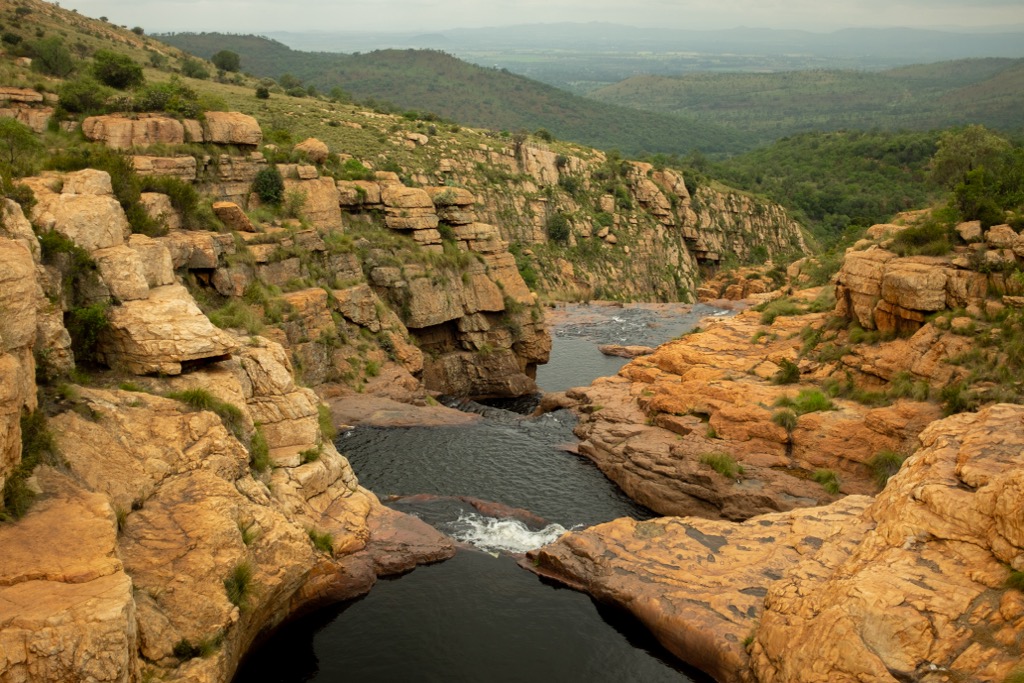
Pretoria is located in the northern part of Gauteng province and serves as one of South Africa’s three capital cities, along with Cape Town and Bloemfontein. Often referred to as the administrative capital, Pretoria boasts a rich history, cultural diversity, and a variety of attractions for visitors.
The Union Buildings are an iconic symbol of South Africa and serve as the official seat of the national government; the beautiful terraced gardens are open to the public, offering panoramic city views.
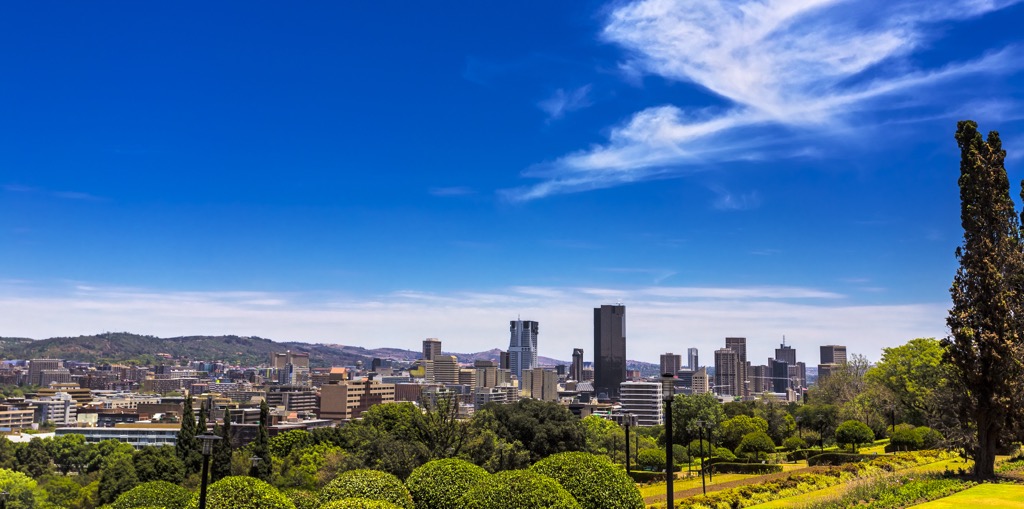
The Voortrekker Monument, a massive granite structure, commemorates the Afrikaans pioneers of the 19th century's Great Trek and houses a museum. Dedicated to the country's struggle for freedom and democracy, Freedom Park is a vast complex with a memorial and museum. It honors those who sacrificed their lives during the fight against apartheid.
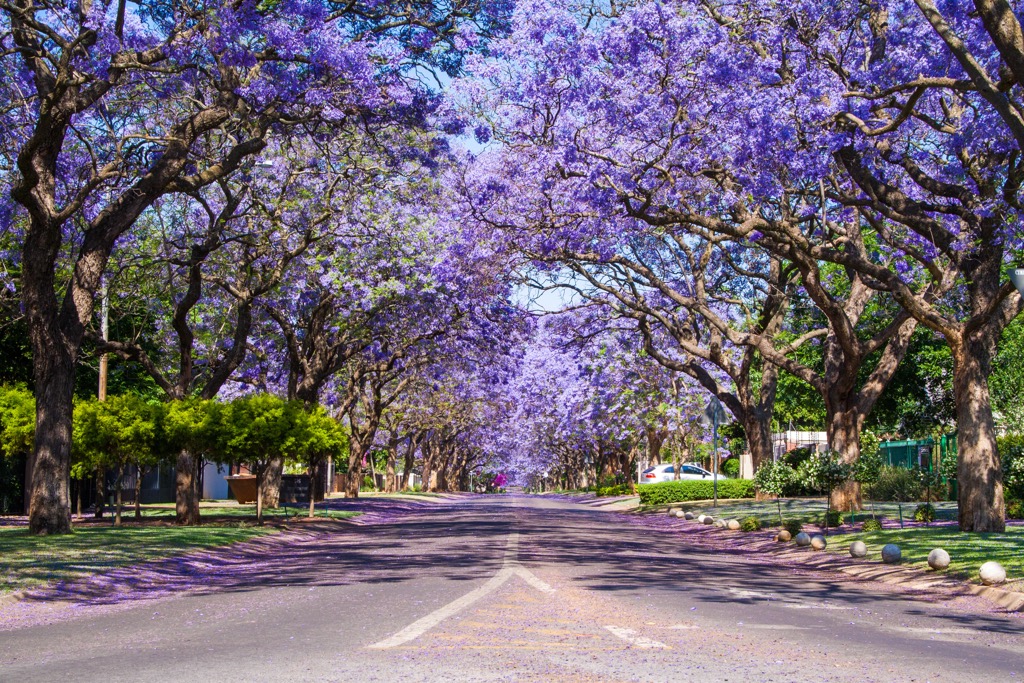
Explore Pilanesberg National Park with the PeakVisor 3D Map and identify its summits.








